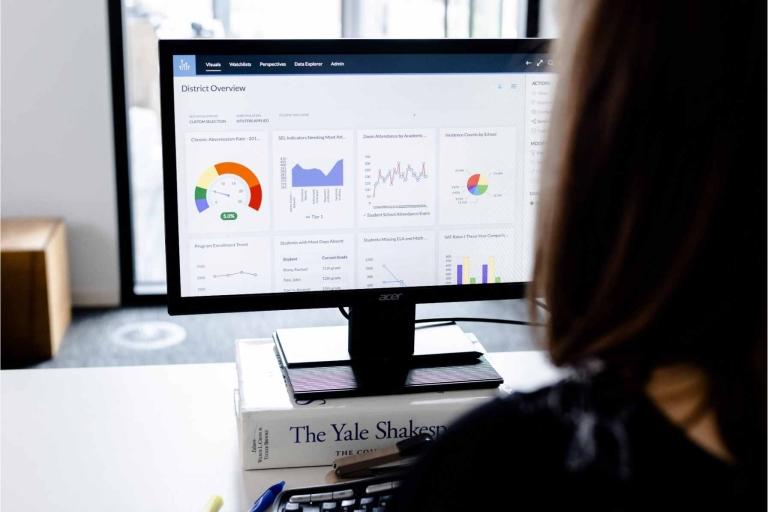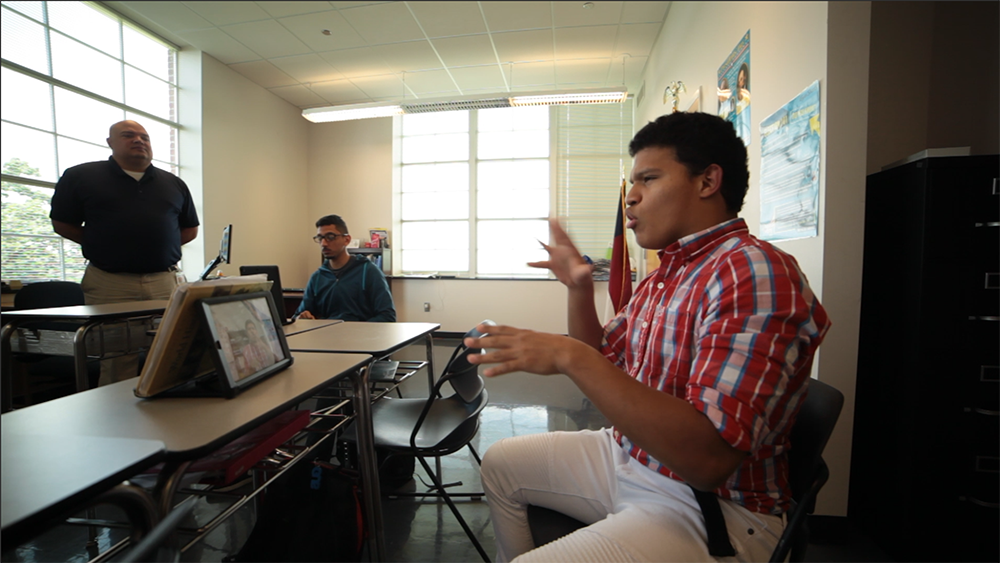Editor's note: Social awareness of the needs of blind and deaf young people has increased, but their paths to achievement can still have roadblocks. This is the first of a three-part blog series that will highlight how a group of schools is succeeding despite challenges.
Millions of children and young adults are returning to school this fall, full of goals and promise and expectations to advance to the colleges or careers of their choice. Among them are students who have had to take a more circuitous path to put themselves in a position to succeed, strictly because of circumstance: They are blind, deaf, or have severe disabilities.
National statistics are only estimates, and can vary due to the varying definitions for these disabilities, but The National Federation for the Blind reports, through census and other information, nearly 700,000 children, ages 4 to 20, reported having a visual disability (2014). Traditionally, blind students in elementary and high school have learned through braille, large print, or audio aids. Statistics from Gallaudet University estimate that nearly one out of every 1,000 people in the United States became deaf before 18 years old, and nearly one million children from ages 3-17 have some type of hearing impairment.
Enacted in 2002, the No Child Left Behind law identified low-performing schools with large achievement gaps and established a federal government role in holding those schools accountable for student outcomes. In 2017, the Every Student Succeeds Act replaced No Child Left Behind and gave new freedom to individual states to shape their education policies. Both laws made designations for students in poverty, racial minorities, and special education students. Despite this, and continued funding for educational programs, there are still different, unassociated cases of students being “left behind” by mainstream schools—and they are deaf and blind students. Thankfully, many organizations throughout the country are not forgetting these students. They are doubling their efforts to make sure every student has a chance to succeed. They are pursuing technology as a means to deliver accessible resources to help young men and women of all ages, backgrounds, and abilities. This day-to-day effort is fulfilling to all of the people involved and inspiring to even those who are not involved. These are just a few of those stories.
North Carolina’s Department of Public Instruction includes Education Services for the Deaf and Blind (ESDB), which oversees three nationally-accredited programs: the Governor Morehead School for the Blind, the North Carolina School for the Deaf, and the Eastern North Carolina School for the Deaf. The schools provide not only intensive instruction for the students, but skills to live independently and prepare for their future careers. Students follow the North Carolina Standard Course of Study and participate in the North Carolina Accountability System.
Each school uses specialized technology and online tools through the Canvas learning management system (LMS) by Instructure, a company that is committed to make teaching and learning easier and accessible. Teachers design courses to be accessible across devices. For deaf students that can mean ways to communicate through video submissions. Blind students can use a braille keyboard, which turns the words on a screen into braille for them to read. Dr. Sarah McManus, the digital learning director for Education Services for the Deaf and Blind says, “You really want students to feel empowered. And so we’re really excited that the students have the opportunity to be able to have their lessons available, have their assignments available, 24 hours a day, every day, as long as they have that internet connection. My message is that all students can learn when they have the tools, and the resources, and the time.”
*Closed captioning available on this video
Eastern North Carolina School for the Deaf - Wilson, N.C.
“Technology has helped bring us into the 21st century,” said Shirley Reed, the principal for the Eastern North Carolina School for the Deaf. “You can take [students] around the world through technology. So hands-on using technology widens our horizons, and the students’ also.”
The K-12 school serves the 54 easternmost counties in North Carolina. Many of the students at ENCSD began at mainstream (regular education) schools, and naturally felt isolated. The isolation deepened at home with parents who did not engage their children in American Sign Language. Parents often felt helpless as they also struggled to make ends meet as members of the lower socioeconomic strata. ENCSD gives them a chance for individualized learning and to interact with students with the same background and experiences. Yudibel Gonzalez, a student at the school said, “Really, when I was mainstreamed in public schools, it was a huge struggle. I was so close-minded. I came here and, I mean, everything is open for me. I’m a happier person now. I’m able to move along in classes, and I feel more confident. And I’m really ready for the future.”
Carter Bearden, the director of ENCSD, says he was “very fortunate” to have been born to a deaf father and a deaf mother. Bearden’s parents attended a state school in Texas, and he says a lot of his values and upbringing come from the help they received as young students: “I think part of the reason I’m here is you can never pay it back in full. There’s always a lot that we’re trying to do to catch that student up to where he or she needs to be. Sometimes it's language acquisition. Sometimes it's literacy. But it's unique, based on the student and it's unique to the student. And we address those in a lot of different ways.”
-Katherine Shealy, Digital Media Instructor, Eastern North Carolina School for the Deaf
-Shirley Reed, principal at Eastern North Carolina School for the Deaf
We at Instructure believe accessibility must have an impact that goes beyond learning in the classroom. It’s a declaration of independence from old ideas and invisible barriers.
For example, Canvas executives recently announced a new feature on voice-enabled devices that makes interactions with the digital landscape easier and more natural for all students. The Canvas Community features an accessibility group where educators can discuss accessibility in the LMS and learn best practices. Tell the Community how this post inspired change in your Canvas course by sharing before and after details in the form of a blog—no change is too small.
Next week in part two of our accessibility series, you'll find how the director of music at a school for the blind is keeping her band students together through technology, and why that school prides itself on using new teaching methods in its curriculum.
IMAGES AND VIDEOS BY ADAM SANDERS, M.Ed.
© 2017 Instructure. All rights reserved.
Related Content
 inst-3step.jpg
inst-3step.jpgBlogs
 13lmsfeaturesthatbenefitstudentlearning.jpg
13lmsfeaturesthatbenefitstudentlearning.jpgBlogs
 community-homepage.jpg
community-homepage.jpgBlogs
